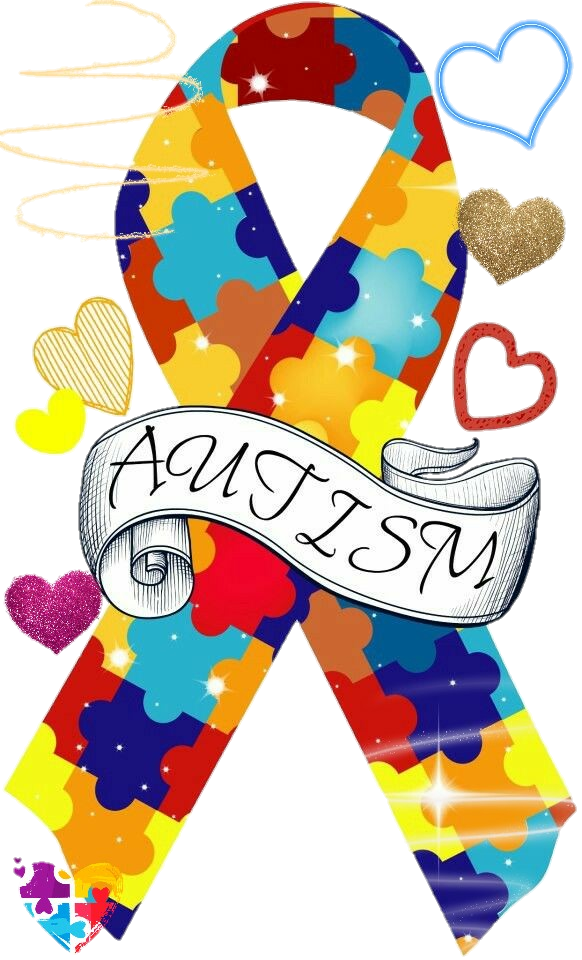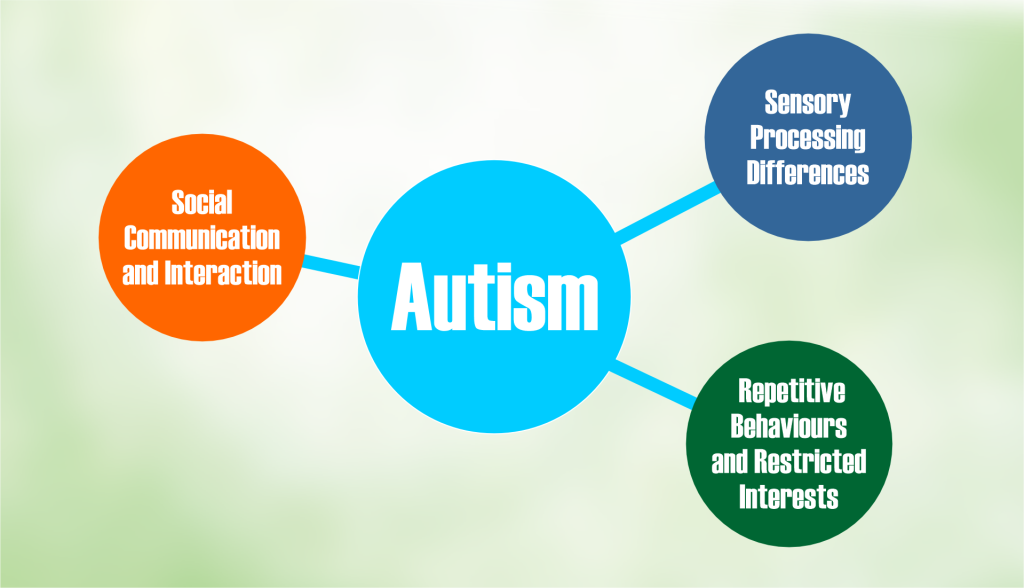
Recognising Autism Spectrum Disorder (ASD) in children at an early age is crucial for providing timely support and intervention. Autism is a complex neurodevelopmental condition that affects how a child interacts with others, communicate, and experience the world around them. It is referred to as a “spectrum” disorder because it encompasses a wide range of symptoms and levels of severity, meaning no two individuals with autism are exactly alike.
What is Autism Spectrum Disorder?
Autism Spectrum Disorder (ASD) is a lifelong condition that primarily affects three key areas of development:
- Social Communication and Interaction – Many children with autism struggle to engage in conversations, understand social cues, or express their thoughts effectively.
- Repetitive Behaviours and Restricted Interests – A child with autism may develop intense interests in specific topics, repeat certain actions, or insist on rigid routines.
- Sensory Processing Differences – Many autistic children experience heightened or reduced sensitivity to sights, sounds, textures, and even tastes, which can influence their behaviours and preferences.

The exact causes of autism are still being researched, but it is believed to result from a combination of genetic and environmental factors. Studies suggest that autism is not caused by poor parenting or vaccines, as previously misunderstood, but rather by differences in brain development. Some children show signs of autism from infancy, while others may appear to develop typically before experiencing a noticeable delay or regression in skills, usually between 12 and 24 months of age.
Why Early Detection Matters
Early diagnosis and intervention play a crucial role in helping autistic children reach their full potential. Therapies such as speech therapy, behavioural therapy, and occupational therapy can significantly improve communication skills, learning abilities, and social interaction. The earlier a child receives support, the better their long-term developmental outcomes can be.
As every child is unique, autism presents in a variety of ways. Some children may be nonverbal but excel in problem-solving, while others may be highly articulate yet struggle with social interactions. Understanding the early signs of autism can empower parents to take proactive steps, ensuring their child receives the necessary resources and support to thrive.
10 Key Signs To Look Out For
1. Delayed Speech or Communication Skills
Children with autism often experience delays in developing speech and language skills. Some may not speak at all, while others might develop speech but struggle with conversational skills, such as taking turns in discussions or responding to questions appropriately. Instead of using words, they may rely on gestures, pictures, or repetitive phrases (known as echolalia), where they repeat words or sentences they have heard without necessarily understanding their meaning.
2. Limited Eye Contact
Eye contact is an essential part of social communication, and many children with autism tend to avoid or struggle with maintaining it. They might look away when spoken to or appear uninterested in making visual connections with others. However, some autistic children can learn to make eye contact but may find it uncomfortable or forced.
Limited eye contact is not always an indicator of disinterest—many autistic children simply process social interactions differently and may find direct eye contact overwhelming.
3. Repetitive Behaviours
Many children with autism engage in repetitive movements or actions, a behaviour known as self-stimulatory behaviour or stimming. This may include:
- Hand-flapping
- Rocking back and forth
- Spinning in circles
- Repeating words or sounds (echolalia)
- Arranging objects in a particular order
These repetitive actions can help autistic children regulate their emotions, cope with sensory overload, or express excitement or frustration.
4. Difficulty with Social Interaction
Autistic children often have difficulty understanding and responding to social cues. This can manifest in different ways:
- Struggling to initiate or maintain conversations
- Difficulty understanding facial expressions, body language, or tone of voice
- Not engaging in imaginative or pretend play
- Showing little interest in playing with other children
They may prefer playing alone or engaging in solitary activities, not because they don’t want to socialise, but because social interactions can be confusing or overwhelming.
5. Strong Preference for Routine
Children with autism often thrive on routines and predictability. They may become extremely distressed if their daily schedule is changed unexpectedly. Examples of this include:
- Insisting on eating the same foods every day
- Taking the same route to school or home
- Wearing the same clothes repeatedly
- Becoming upset if a favourite TV show or activity is interrupted
This preference for routine helps autistic children feel safe and in control of their environment, as changes can be overwhelming.
6. Sensory Sensitivities
Many autistic children experience heightened or diminished responses to sensory stimuli. This can involve:
- Hypersensitivity (over-responsive): Being easily overwhelmed by loud noises, bright lights, strong smells, or certain textures (e.g., avoiding certain fabrics or refusing to eat foods with specific textures).
- Hyposensitivity (under-responsive): Not reacting to pain, extreme temperatures, or loud sounds as expected. Some may seek out intense sensory experiences, such as spinning, jumping, or touching different surfaces.
Sensory sensitivities can make everyday environments, such as shopping malls, classrooms, or busy streets, overwhelming for autistic children.
7. Unusual Interests or Intense Focus
Autistic children often develop deep, intense interests in specific topics. These can include:
- Trains, aeroplanes, or maps
- Numbers, letters, or patterns
- Dinosaurs, space, or historical events
- Household objects like fans or clocks
They may talk about these interests obsessively, memorise large amounts of information, or prefer discussing their favourite topic rather than engaging in general conversation. While strong interests can be a strength, they may sometimes interfere with social interactions if the child struggles to talk about other subjects.
8. Lack of Pointing or Gesturing
By the age of 12 months, most children point to objects of interest, wave goodbye, or use other simple gestures to communicate. A lack of these gestures in a toddler can be an early sign of autism. Instead of pointing to request something, an autistic child may take a caregiver’s hand and place it on the desired object without making eye contact or engaging in shared attention.
Gestures and body language play a key role in communication, and difficulty using them can contribute to language and social delays.
9. Difficulty Understanding Emotions
Autistic children often find it challenging to interpret and express emotions. This can manifest as:
- Not recognising when someone is happy, sad, or angry
- Not reacting appropriately to another person’s emotions
- Difficulty expressing their own emotions in a way others can understand
- Having trouble with empathy or understanding how their actions affect others
This does not mean that autistic children lack emotions or care about others; rather, they may struggle to read social cues and express their feelings in conventional ways.
10. Regression of Skills
In some cases, children with autism appear to develop typically but then lose previously acquired skills. This regression can include:
- Losing the ability to say words they once used
- No longer making eye contact or responding to their name
- Withdrawing from social interactions
- Forgetting how to play in ways they previously enjoyed
Regression typically occurs between 12 and 24 months of age and can be a strong sign of autism. If a child shows sudden developmental setbacks, parents should seek professional evaluation as soon as possible.
What to Do If You Notice These Signs
If your child exhibits any of these signs, it’s important to consult a healthcare professional. Early diagnosis can lead to targeted interventions, which greatly enhance a child’s development and quality of life.
Every child is unique, and autism is a spectrum, meaning that the severity and combination of traits vary. Understanding and supporting children with autism helps them reach their full potential in a world that can sometimes feel overwhelming.
If you notice any of these signs in your child, contact us to learn more about Zinzino Balance Oil, which can help manage autism symptoms in children and support their overall well-being.
